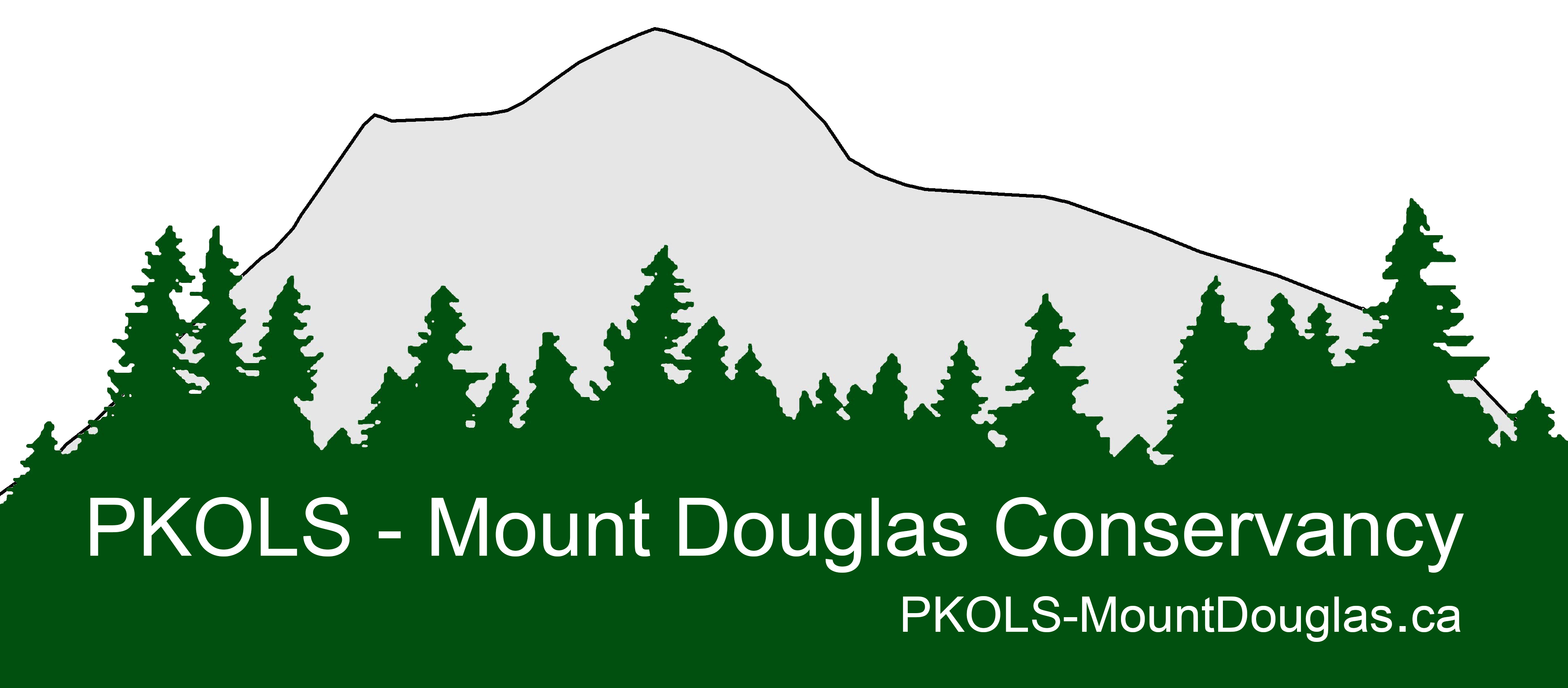PKOLS-Mount Douglas is Saanich’s largest protected Coastal Douglas-fir forest. Our nature preserve is in a narrow climatic region with a Mediterranean-like climate that allows these trees to grow; unfortunately, through many factors, these forests in this zone are mostly unprotected and diminishing quickly. We are fortunate to have these forests in under the protection of the Charter, so we can pass down this preserve to our children. We are thankful that the Saanich Environmental Official Community Plan (OCP), calls for the protection of air, land, and water quality and the biodiversity of existing natural areas and ecosystems. This plan further states, “While use of the parks will undoubtedly increase as the region grows, the rare and valuable natural resources within the park natural areas must be protected.”
The following article in the Rain Coast Conservation Foundation talks about how, for both Washington State and BC, these critical forests contain a “profound amount of micro-habitat diversity in this area.”

Why is the CDFCP Region at Risk?
“The CDFCP Region is at risk of losing many of the species, relationships, and healthy ecosystems that define it. Confined to a small area on south-eastern Vancouver Island and the Sunshine Coast, the natural ecosystems are competing with human pressures, including development, industrial landscape use, increasing numbers and frequency of invasive species, and increased recreational use. Some of the ecosystems associated with the CDFCP Region, such as Coastal Bluffs, Garry Oak ecosystems, and wetland ecosystems, have lost well over 75% of their former area.” (from CDFCP site)
- The Coastal Douglas-fir biogeoclimatic zone (CDF zone) is the smallest and most at-risk zone in BC and is of conservation concern (Biodiversity BC, 2008).
- The CDF zone is home to the highest number of species and ecosystems at risk in BC, many of which are ranked globally as imperilled or critically imperilled (BC CDC, 2012).
- The global range of the CDF lies almost entirely within BC, underscoring both its global uniqueness and BC’s responsibility for its conservation.
- Of all the zones in BC, the CDF has been most altered by human activities. Less than 1% of the CDF remains in old-growth forests (Madrone, 2008) and 49% of the land base has been permanently converted by human activities (Hectares BC, 2010).
- The trend of deforestation and urbanization continues and has resulted in a natural area that is now highly fragmented with continuing threats to remaining natural systems.
- Approximately 11% of the CDF zone is protected in conservation areas6.
- The extent of disturbance combined with the low level of protection places the ecological integrity of the CDF zone at high risk (Holt, 2007).

